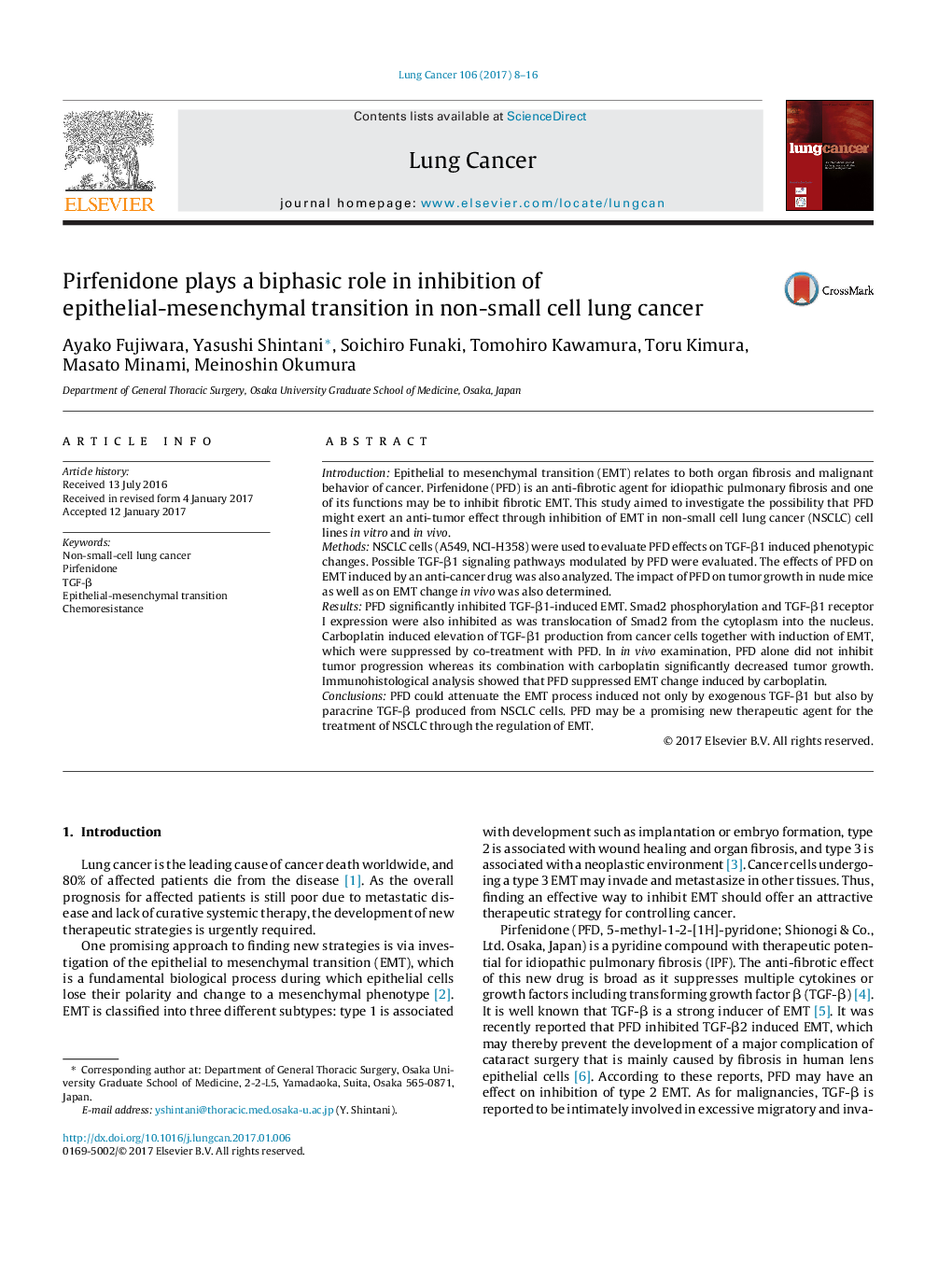| کد مقاله | کد نشریه | سال انتشار | مقاله انگلیسی | نسخه تمام متن |
|---|---|---|---|---|
| 5528147 | 1547961 | 2017 | 9 صفحه PDF | دانلود رایگان |
- Pirfenidone reduces lung fibrosis through downregulation of multiple cytokines.
- Pirfenidone inhibited TGF-β-induced EMT by impairing Smad signaling in NSCLC cells.
- Pirfenidone attenuated chemoresistance by decreasing TGF-β production in NSCLC cells.
- Pirfenidone combined with chemotherapy suppressed tumor growth and EMT in vivo.
- Pirfenidone may be a new therapeutic agent for NSCLC patients via regulation of EMT.
IntroductionEpithelial to mesenchymal transition (EMT) relates to both organ fibrosis and malignant behavior of cancer. Pirfenidone (PFD) is an anti-fibrotic agent for idiopathic pulmonary fibrosis and one of its functions may be to inhibit fibrotic EMT. This study aimed to investigate the possibility that PFD might exert an anti-tumor effect through inhibition of EMT in non-small cell lung cancer (NSCLC) cell lines in vitro and in vivo.MethodsNSCLC cells (A549, NCI-H358) were used to evaluate PFD effects on TGF-β1 induced phenotypic changes. Possible TGF-β1 signaling pathways modulated by PFD were evaluated. The effects of PFD on EMT induced by an anti-cancer drug was also analyzed. The impact of PFD on tumor growth in nude mice as well as on EMT change in vivo was also determined.ResultsPFD significantly inhibited TGF-β1-induced EMT. Smad2 phosphorylation and TGF-β1 receptor I expression were also inhibited as was translocation of Smad2 from the cytoplasm into the nucleus. Carboplatin induced elevation of TGF-β1 production from cancer cells together with induction of EMT, which were suppressed by co-treatment with PFD. In in vivo examination, PFD alone did not inhibit tumor progression whereas its combination with carboplatin significantly decreased tumor growth. Immunohistological analysis showed that PFD suppressed EMT change induced by carboplatin.ConclusionsPFD could attenuate the EMT process induced not only by exogenous TGF-β1 but also by paracrine TGF-β produced from NSCLC cells. PFD may be a promising new therapeutic agent for the treatment of NSCLC through the regulation of EMT.
Journal: Lung Cancer - Volume 106, April 2017, Pages 8-16
